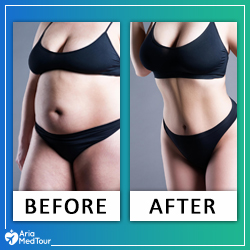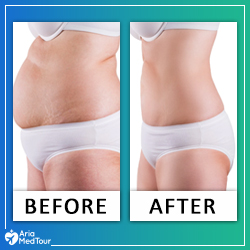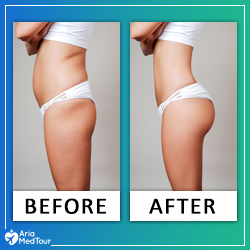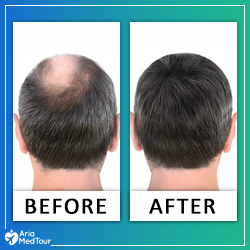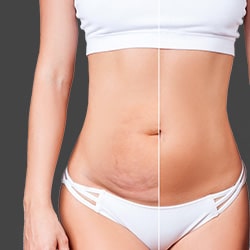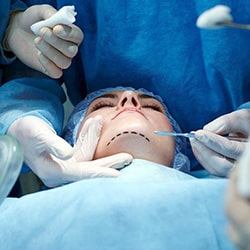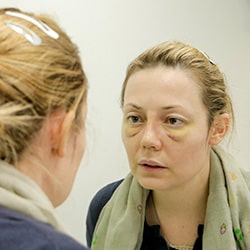Gynecomastia refers to the unnatural enlargement or swelling of breast tissue in boys and men. Enlarged male breast tissue does not lead to any serious health problem but brings about psychological effects. Men with such a condition usually suffer from poor self-image and feel discomfort with particular activities; especially sexual intimacy. This physiological condition is relatively prevalent among men with gynecomastia.
If you are suffering from such physical disorder, this article suggests you the best surgical and non-surgical solutions for getting rid of gynecomastia. Before that, let’s see what gynecomastia is.

Breast reduction surgery is an absolute solution to get rid of gynecomastia.
Gynecomastia vs. pseudogynecomastia
All enlarged breasts do not mean “gynecomastia.” Pseudogynecomastia is a condition that can happen to the overweight and obese men, which is the bilateral deposition of fat in their chest. Real gynecomastia is the enlargement of breast glandular tissue rather than obesity.
In other words, an overweight person could easily get rid of large fat tissues by doing exercise or liposuction, while gynecomastia cannot be removed by losing weight. However, here we suggest techniques to get rid of big breasts, whether you are suffering from pseudo or real gynecomastia.
Gynecomastia causes
Except for obesity which causes pseudogynecomastia, hormonal factors are the primary causes of breast enlargement and real gynecomastia in men. Estrogen triggers female traits such as breast growth, while testosterone mainly controls male traits such as body hair growth.
Males and females have both of these hormones in their bodies. However, testosterone is the active hormone in males, and estrogen is the active hormone in females. Any imbalance between estrogen and testosterone hormones could disturb the process of their physiological mechanism. In males, for example, an increase in the estrogen levels compared to testosterone may lead to gynecomastia.
Hormonal disorders in men are in large part stimulated by a set of factors. Some diseases, malnutrition, genetics, cancer, anabolic steroid use, and some medications could lead to the excess production of estrogen compared to testosterone, which may trigger breast tissue growth in men. You can prevent the development of gynecomastia by avoiding illegal drugs, alcohol, and considering the side effects of medications before taking them.
Another cause of gynecomastia is hormonal changes that appear during the normal physical development of boys during infancy and puberty. In this case, gynecomastia may be resulted from a temporary hormonal imbalance in the body and fades away on its own within two or three weeks to at most three years. However, enlarged breasts with more than 4cm in diameter may not completely disappear.
Signs and symptoms of gynecomastia
The first sign of gynecomastia is swelling breasts in men. As mentioned before, it is caused by the enlargement of glandular tissues located around the nipple rather than fat deposits. The disease is usually associated with the feeling of tenderness when the nipples are touched. In most cases, the patient feels no pain in their chest but find it a little firm.
Diagnosis
Depending on your medical and drug history, the doctor can diagnose real gynecomastia. A careful physical examination is required to pinpoint the cause of the disease. Your doctors may ask you to have blood tests and mammography to determine gynecomastia and find out the underlying reasons. In the next steps, further examination, including CT scan, MRI, tissue biopsies, and testicular ultrasounds are usually required based on the results of your initial tests.
When the above-mentioned examinations are done, the doctor may diagnose gynecomastia or any other condition such as breast cancer or the presence of fatty breast tissue.
Gynecomastia treatment
In most cases, gynecomastia regresses within two years and requires no treatment. But in some cases, in which the disease stems from malnutrition, taking medications, hypogonadism, and cirrhosis, treatment is suggested. The condition could be treated non-surgically or surgically.
Non-Surgical treatments for gynecomastia
In some cases, gynecomastia goes away without going under the knife. If you are looking for non-surgical solutions to your gynecomastia, here are the options:
1- Medications
There are some suggested medications for the treatment of gynecomastia although none of them has been approved by the FDA (Food & Drug Association). Besides, there is little data that have proven the effectiveness of these drugs. Medications and medication-based treatments for gynecomastia treatment include:
- Testosterone replacement therapy
- Clomiphene
- Tamoxifen (Nolvadex), a selective estrogen receptor modulator (SERM)
- Danazol
2- Diet changes
Although no studies have been conducted on the effects of food on gynecomastia, some believe that certain foods could lead to a shift in hormone levels. These foods include:
- canned food
- Soy
- Shrimps
- Beer
- Protean powders
- Strawberries
- Multigrain bread
Instead, it is recommended to eat low-cal, nutrient-rich food, and those with anti-inflammatory properties such as berries, leafy greens, citrus fruits, and beans.
3- Laser therapy
Laser therapy is a non-surgical method that targets the cellulite caused by gynecomastia. The process requires a long run course of treatment to help you get rid of large boobs permanently.
Finally, doing exercises, reducing alcohol intake, avoiding narcotic drugs and marijuana can help you to get rid of gynecomastia non-surgically.
Surgical treatments for gynecomastia
You may be still suffering from gynecomastia despite trying non-surgical and initial options. In this case, your doctor may recommend gynecomastia surgery. There are two main surgical techniques for gynecomastia surgery. After careful examination, your doctor will recommend the best option for you. The surgical approaches to gynecomastia removal are as follows:
1- Liposuction
Liposuction is a common treatment for gynecomastia. It is more suitable for those whose large breasts are resulted from the accumulation of fat cells. The procedure involves inserting a thin tube through lateral incisions on the chest and removing excess fat or glandular tissue from it by vacuum suction. The procedure is typically done using local anesthesia.
2- Excision technique
In cases in which glandular breast tissue or excess skin should be removed, the excision technique is suggested. This technique may involve reducing the areola and repositioning the nipple. In the excision technique, the surgeon makes incisions in the breasts, through which he/she can access the excess tissue and remove it. Excision technique is an outpatient procedure and you won’t have to stay in the hospital overnight.
In some cases, your doctor decides to implement both techniques to achieve optimal results.
We at AriaMedTour help you to boost your confidence with a gynecomastia surgery done by our skilled, experienced, and professional surgeons. Thanks to the most modern techniques, Iranian cosmetic surgeons provide you with a natural-looking chest with minimal scarring. After the surgery, you could feel an immediate improvement in the shape of your breast. Now, it is time to say goodbye to your unfavorable appearance and live a whole new life.



